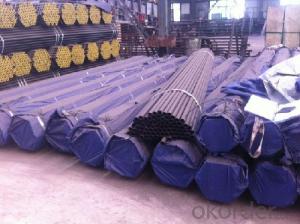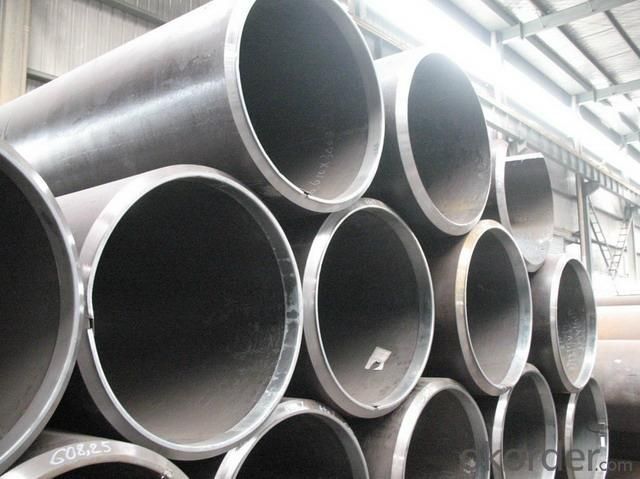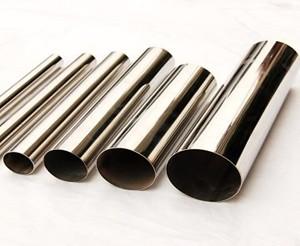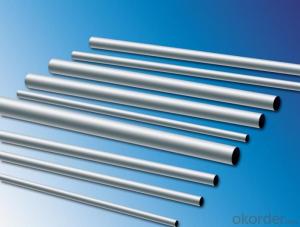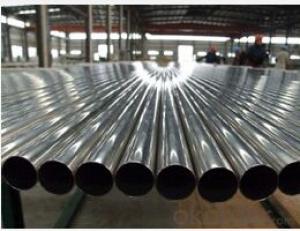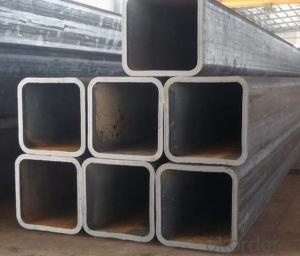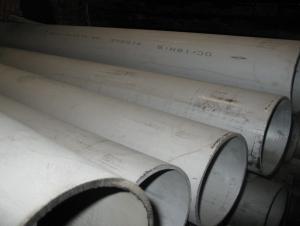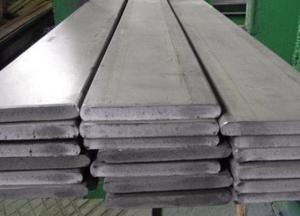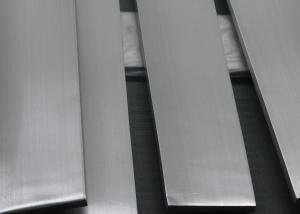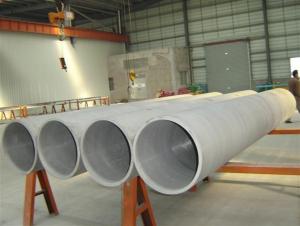ASTM Standard Stainless Steel Welded Pipe
- Loading Port:
- China Main Port
- Payment Terms:
- TT or LC
- Min Order Qty:
- 25 m.t.
- Supply Capability:
- 8000 m.t./month
OKorder Service Pledge
OKorder Financial Service
You Might Also Like
1、Structure of ASTM Standard Stainless Steel Welded Pipe:
ASTM Standard Stainless Steel Welded Pipe is formed by drawing a solid billet over a piercing rod to create the hollow shell. As the manufacturing process does not include any welding, ASTM Standard Stainless Steel Welded Pipe are perceived to be stronger and more reliable. Historically ASTM Standard Stainless Steel Welded Pipe was regarded as withstanding pressure better than other types, and was often more easily available than welded pipe.
2、Main Features of ASTM Standard Stainless Steel Welded Pipe:
• High manufacturing accuracy
• High strength
• Small inertia resistance
• Strong heat dissipation ability
• Good visual effect
• Reasonable price
3、ASTM Standard Stainless Steel Welded Pipe Specification:
Standard | GB, DIN, ASTM ASTM A106-2006, ASTM A53-2007 |
Grade | 10#-45#, 16Mn 10#, 20#, 45#, 16Mn |
Thickness | 8 - 33 mm |
Section Shape | Round |
Outer Diameter | 133 - 219 mm |
Place of Origin | Shandong, China (Mainland) |
Secondary Or Not | Non-secondary |
Application | Hydraulic Pipe |
Technique | Cold Drawn |
Certification | API |
Surface Treatment | factory state or painted black |
Special Pipe | API Pipe |
Alloy Or Not | Non-alloy |
Length | 5-12M |
Outer Diameter | 21.3-610mm |
Grade | 20#, 45#, Q345, API J55, API K55, API L80, API N80, API P110, A53B |
Standard | ASME, ASTM |
1) Material:20#(ASTM A 106/A53 GRB.API5LGRB,GB),45#,16Mn,10#.
2) Specification range:OD:21.3-610mm,WT:6-70mm,length:6-12m or according to the requirement of clients.
3) Excutive standards:GB,ASME API5L.ASTM A 106/A53,Despite of the above standards,we can also supply seamless steel pipe with standard of DIN,JIS,and so on,and also develop new products according to the requirements of our clients!
4) Surface:black lacquered,varnish coating or galvanized.
5) Ends:Beveled or square cut,plastic capped,painted.
6) Packing:bundles wrapped with strong steel strip,seaworthy packing.
4、Packaging & Delivery
Packaging Details: | seaworthy package,bundles wrapped with strong steel strip |
Delivery Detail: | 15-30days after received 30%TT |
5、FAQ of ASTM Standard Stainless Steel Welded Pipe :
①How is the quality of your products?
Our products are manufactured strictly according to national and internaional standard, and we take a test
on every pipe before delivered out. If you want see our quality certifications and all kinds of testing report, please just ask us for it.
Guaranteed: If products’ quality don’t accord to discription as we give or the promise before you place order, we promise 100% refund.
②How about price?
Yes, we are factory and be able to give you lowest price below market one, and we have a policy that “ for saving time and absolutely honest business attitude, we quote as lowest as possible for any customer, and discount can be given according to quantity”,if you like bargain and factory price is not low enough as you think, just don’t waste your time.Please trust the quotation we would give you, it is professional one.
③Why should you chose us?
Chose happens because of quality, then price, We can give you both.Additionally, we can also offer professional products inquiry, products knowledge train(for agents), smooth goods delivery, exellent customer solution proposals.Our service formula: good quality+good price+good service=customer’s trust
SGS test is available, customer inspection before shipping is welcome, third party inspection is no problem.
5. ASTM Standard Stainless Steel Welded Pipe Images


- Q: What is the difference between duplex and super duplex stainless steel pipes?
- The main difference between duplex and super duplex stainless steel pipes lies in their chemical composition and mechanical properties. Duplex stainless steel pipes have a mixed microstructure of austenite and ferrite, offering a good balance of corrosion resistance and strength. On the other hand, super duplex stainless steel pipes have a higher content of chromium, molybdenum, and nitrogen, providing exceptional resistance to corrosion, especially in harsh environments. Super duplex stainless steel pipes also possess superior mechanical properties, such as increased tensile strength and improved resistance to stress corrosion cracking.
- Q: Are stainless steel pipes suitable for underground heating systems?
- Yes, stainless steel pipes are suitable for underground heating systems. Stainless steel is highly resistant to corrosion, making it ideal for underground applications where pipes are exposed to moisture and other harsh conditions. Additionally, stainless steel pipes have excellent thermal conductivity, ensuring efficient heat transfer throughout the system.
- Q: What is the difference between 304J3 and 316J3 stainless steel pipes?
- The main difference between 304J3 and 316J3 stainless steel pipes lies in their composition and corrosion resistance properties. 304J3 stainless steel is a grade of stainless steel that contains 18% chromium and 8% nickel. It is known for its excellent corrosion resistance, high strength, and good formability. This grade is commonly used in various applications, such as food processing, chemical processing, and architectural applications. On the other hand, 316J3 stainless steel is a grade that contains 16-18% chromium, 10-14% nickel, and 2-3% molybdenum. This additional molybdenum content enhances its corrosion resistance, especially against chloride environments. As a result, 316J3 stainless steel is often used in more demanding applications, such as marine environments, pharmaceutical equipment, and coastal structures. In summary, the key difference between 304J3 and 316J3 stainless steel pipes is the composition and the subsequent corrosion resistance properties. While both grades offer good corrosion resistance, 316J3 stainless steel provides superior resistance in chloride-rich environments, making it suitable for more demanding applications.
- Q: Can stainless steel pipes be insulated with foam?
- Yes, stainless steel pipes can be insulated with foam. Foam insulation is commonly used to insulate pipes of various materials, including stainless steel. Foam insulation provides thermal resistance and helps to prevent heat loss or gain from the pipes. It also helps to minimize condensation on the surface of the pipes, which can prevent corrosion. Foam insulation can be easily applied to stainless steel pipes using adhesive or tape, and it can be customized to fit the specific dimensions of the pipes. Overall, foam insulation is an effective and cost-efficient solution for insulating stainless steel pipes.
- Q: Can stainless steel pipes be used for natural gas?
- Yes, stainless steel pipes can be used for natural gas. Stainless steel is highly resistant to corrosion and can withstand the high pressures and temperatures associated with natural gas transmission and distribution. Additionally, stainless steel pipes have excellent fire resistance properties, making them a safe choice for natural gas applications.
- Q: What are the different types of stainless steel pipe insulation?
- There are several different types of stainless steel pipe insulation available on the market. These types can vary in terms of their material composition, construction, and insulation properties. One common type is fiberglass insulation, which consists of a layer of fiberglass material wrapped around the stainless steel pipe. This type of insulation is known for its excellent thermal insulation properties and its ability to withstand high temperatures. It is also resistant to moisture, making it suitable for both indoor and outdoor applications. Another type is foam insulation, which is made from a foamed plastic material such as polyurethane or polystyrene. Foam insulation is lightweight and easy to install, and it provides good thermal insulation as well as acoustic insulation. It is commonly used in residential and commercial buildings to insulate hot water pipes and HVAC systems. Additionally, there are elastomeric insulation materials, which are flexible rubber-like materials that can be easily wrapped around the stainless steel pipe. These materials are known for their excellent thermal insulation properties and their ability to resist moisture and condensation. Elastomeric insulation is commonly used in refrigeration and air conditioning systems. Finally, there are also pre-insulated stainless steel pipe systems, which consist of a stainless steel pipe already insulated with a layer of insulation material. This type of insulation is commonly used in industrial applications where thermal insulation is critical, such as in chemical plants or oil refineries. In conclusion, the different types of stainless steel pipe insulation include fiberglass insulation, foam insulation, elastomeric insulation, and pre-insulated pipe systems. The choice of insulation type depends on factors such as the application, desired insulation properties, and budget.
- Q: How is stainless steel pipe different from carbon steel pipe?
- Stainless steel pipe and carbon steel pipe differ mainly in their composition and corrosion resistance properties. Stainless steel pipe contains a higher percentage of chromium, which forms a passive oxide layer on its surface, making it highly resistant to corrosion and oxidation. On the other hand, carbon steel pipe does not have this protective layer, making it more prone to rust and corrosion. Additionally, stainless steel pipe is generally more expensive than carbon steel pipe due to its superior corrosion resistance and durability.
- Q: Can stainless steel pipes be used for rainwater harvesting systems?
- Stainless steel pipes are indeed suitable for rainwater harvesting systems. This material possesses durability and resistance to corrosion, making it an ideal selection for the collection and storage of rainwater. Moreover, stainless steel pipes are effortless to maintain and boast a prolonged lifespan, guaranteeing the system's effectiveness and longevity. Furthermore, due to their hygienic nature, stainless steel pipes do not taint the collected rainwater, ensuring its safety for multiple applications, including irrigation, cleaning, and even drinking in certain instances.
- Q: Can stainless steel pipes handle high-velocity fluid flow?
- Yes, stainless steel pipes are capable of handling high-velocity fluid flow due to their excellent strength, durability, and resistance to corrosion.
- Q: Can stainless steel pipes be used for chemical processing applications?
- Yes, stainless steel pipes can be used for chemical processing applications. Stainless steel is highly resistant to corrosion and can withstand a wide range of chemicals and temperatures, making it an ideal choice for chemical processing industries. Its durability, strength, and ability to maintain product purity make stainless steel pipes suitable for various chemical processes such as manufacturing, transportation, and storage of chemicals.
Send your message to us
ASTM Standard Stainless Steel Welded Pipe
- Loading Port:
- China Main Port
- Payment Terms:
- TT or LC
- Min Order Qty:
- 25 m.t.
- Supply Capability:
- 8000 m.t./month
OKorder Service Pledge
OKorder Financial Service
Similar products
Hot products
Hot Searches
Related keywords
